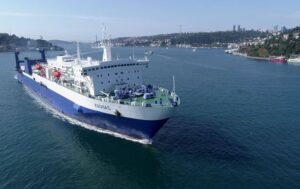
Ukraine has resumed ferry service with Georgia, operating two sailings from the Chornomorsk port to the Georgian port of Batumi for the first time since the start of the full-scale invasion.
“Two flights were made on March 18 and 26 from the port of Chornomorsk to the port of Batumi, and the third flight is planned for next week,” said Tymofiy Murakhovsky, Director of Commercial and Logistics at Ukrzaliznytsia JSC, at a meeting on the Restoration of the Ukraine-Georgia Ferry Service within the TTM Corridor.
According to him, the project is being implemented with the participation of the shipping company Ukrferry (Odesa) and UZ Cargo Poland, a subsidiary of Ukrzaliznytsia, in Warsaw. According to Murakhovsky, the first voyages in March were carried out in a mode of information silence. He urged businesses to become more actively involved in the direction. As you know, since the beginning of Russia’s full-scale aggression in February 2022, there has been no maritime traffic between Ukraine and Georgia.
The shipping company Ukrferry announced the resumption of the Chornomorsk-Batumi ferry service on July 9, 2024, but this did not happen.
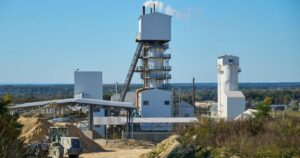
Kovalska Group is completing the construction of the first phase of a modern autoclaved aerated concrete plant in Rozvadiv village (Lviv region) and has completed the installation of equipment and is preparing for commissioning, the company’s press service reports.
“Investments in the construction of two stages will amount to more than EUR 100 million. This is the largest project in the company’s history. We are building the plant in accordance with European standards, with increased requirements for quality, environmental friendliness, and efficiency. The products will be sold both in Ukraine and abroad,” the group’s CEO Sergiy Pylypenko was quoted as saying in the release.
The first stage’s capacity will allow it to produce almost 600 thousand square meters of aerated concrete products annually, including blocks, panels, U-blocks and reinforced elements. After the second stage is commissioned, the capacity will increase to 1.2 million square meters per year, making Kovalska Aerated Concrete one of the largest producers of autoclaved aerated concrete in Ukraine.
The enterprise is being built on an industrial site of over 140 hectares located 40 km from Lviv, where lime and sand quarries and industrial assets for their processing are already operating.
A Siltek dry mix plant is planned to be built within the same area, which, together with the aerated concrete plant and quarries, will form Kovalska’s western industrial hub, located in close proximity to partners and customers, as well as to the European border.
During construction, special attention was paid to infrastructure.
In addition to the production lines, an administrative and amenity complex, repair shops, warehouses, a hotel, a space with a shop, a food court, a sports ground and a parking area are being built on the site. The architectural design of the complex will reflect Kovalska’s approach to construction: quality, functionality, recognizable style and aesthetics. The non-industrial part of the infrastructure will be open to residents of Rozvadov and guests of the enterprise.
According to the Group’s earnings reports, in 2024, the Group earned UAH 32 million 870 thousand in net profit, which is 24.4% lower than in 2023.
Kovalska Industrial and Construction Group LLC was founded in 2007. The ultimate beneficiaries are Oleksandr and Serhiy Pylypenko (33% each), Volodymyr Surup (17.3%) and Mykola Subotenko (16.7%).
The authorized capital of the group is UAH 62 million 289 thousand 815.
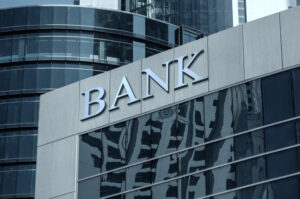
Ukrainian banks have started financing projects to install energy equipment with a total capacity of more than 639 MW worth UAH 17 billion from June 2024 to March 2025, the National Bank of Ukraine (NBU) reported on its website on Thursday, based on a survey of 20 banks.
“Banks received 4,086 applications from businesses for lending to energy infrastructure restoration projects totaling UAH 83.9 billion and started financing such projects (provided loans and opened limits) in the amount of UAH 16.7 billion,” the central bank said.
According to the central bank, the total number of applications submitted in March increased to 207 from 194 in February. However, their volume decreased almost threefold – from UAH 6.7 billion to UAH 2.27 billion, although 95 applications worth UAH 2.28 billion were approved, compared to 70 applications in February worth UAH 0.75 billion.
The number of loans actually disbursed in March also increased – from 94 in February to 118 in March, and the total amount of funding disbursed increased from UAH 0.91 billion to UAH 2.6 billion.
The National Bank clarified that since June 2024, most of the funds have been allocated for the purchase and installation of gas-piston cogeneration units (260 MW), the construction of solar power plants (190 MW) and the purchase of diesel and gasoline generators (128 MW).
According to him, banks also lend to the population: since June 2024, 6,799 loans have been granted in the amount of UAH 936 million, and the gross portfolio of loans to individuals for these purposes, including repayments, is UAH 7189 million.
As reported, in June 2024, with the assistance of the NBU, 20 banks controlling more than 85% of the sector’s net assets signed a memorandum of understanding to finance energy recovery. The lending programs take into account the needs of SMEs and large businesses, as well as households. Businesses can receive financing for the construction of solar, wind, and biogas plants, gas turbine and gas piston power plants, and the purchase of industrial batteries and storage devices.
The base lending rate under the memorandum is 13.5% per annum (or UIRD3M + 0.5% for the first year of financing, and then no more than UIRD12M + 3%).
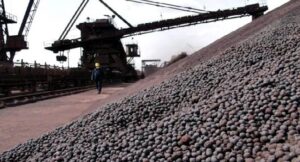
In 2024, Ferrexpo, a mining company with assets in Ukraine, increased its total sales of iron ore products by 64% year-on-year to 6.8 million tons, and by 26% to Europe, to 5.3 million tons.
According to the company’s annual report, sales grew mainly due to the reopening of Ukrainian Black Sea ports, which enabled the group to increase sales to customers in the Middle East and Asia using larger vessels, as well as to switch some sales to European customers from more expensive rail and barges to lower-cost sea routes.
It is also noted that last year, the company’s relations with premium European customers deepened with the signing of several memorandums of understanding to explore the sale of DR pellets (direct reduced iron), improve the quality of pellets and study the decarbonization of logistics routes. Memorandums of understanding were also signed with customers in Asia and MENA.
In 2025, the company intends to continue exporting its products from Ukrainian Black Sea ports as long as it is safe and economically viable, meaning that while Europe remains the main regional market, the group will also continue to sell to China and other Asian countries, as well as to its growing customer base in MENA.
According to the report, despite numerous logistical challenges, including the transportation of goods in the Odesa region, the company managed to ensure a stable transportation process during 2024. 84% of all domestic rail transportation was carried out by the group’s own railcar fleet, and 16% was carried out by third-party operators.
According to Viktor Lotous, Chairman of the Board of Poltava Mining and Head of Ferrexpo’s operations in Ukraine, our own repair facilities played an important role in ensuring uninterrupted transportation. The company’s existing facilities fully cover the needs for maintenance, repair and re-equipment of railcars, which reduces dependence on third-party contractors and ensures a high level of rolling stock availability.
An important factor that may affect future costs is the initiative of UZ to index tariffs, which is likely to increase transportation costs. Ferrexpo is closely analyzing the potential impact of this decision, considering ways to minimize costs, Lotous emphasized in the report.
He also informed that mining operations at Bilanivsky GOK were suspended due to the expiration of the license on December 20, 2024, but due to the extension of martial law in Ukraine, the validity of the Special Permit No. 3572 for Bilanivsky deposit was automatically extended until the end of martial law (May 9, 2025). It is assumed that another six months will be available to apply for an extension.
According to him, in early 2024, the reserves estimate of the Belanivske field was updated, and the results were approved by the State Commission on Mineral Resources. According to the results of the license revaluation, the area of the Belanivske deposit was reduced from 989 to 716 hectares, the area of the Belanivske contour of the deposit was reduced, poor ores were written off, and the balance sheet mineral reserves were reduced from 1706 million tons to 614 million tons. In February 2025, the company received an updated special permit No. 3572 for the Belanivske deposit.
The company continues to cooperate with government agencies to extend the license for the Belanivske field due to the extension of martial law and amendments to the Subsoil Code of Ukraine to ensure the possibility of extending the special permit.
The CEO also said that programs to increase ore production and decarbonization remain long-term goals. The initial first wave program to increase production capacity by 3 million tons per year is currently under review.
“Desktop work, including optimization studies, is ongoing. However, wherever possible, investments have been postponed. Nevertheless, despite the ongoing war, various capital expenditure projects are aimed at improving product quality and efficiency. For example, the company has introduced a pelletizing technology at the pelletizing plant to strengthen finished pellets, while increasing productivity and reducing iron losses to save costs and reduce emissions,” Lotus stated.
As reported earlier, Ferrexpo lost a case in the Supreme Court to reinstate one of its licenses for exploration of the Galeshchyna (Kremenchuk) ferruginous quartzite deposit after Bilanivsky GOK was sanctioned.
Ferrexpo is an iron ore company with assets in Ukraine. Ferrexpo owns 100% of Poltava Mining, 100% of Yeristovo Mining and 99.9% of Bilanivsky GOK.
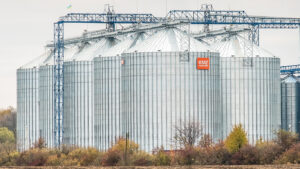
The elevators of the Agrotrade agricultural holding have already received more than 280 thsd tonnes of products in the season-2024-2025, which is 62% of the planned volumes, the company’s press service reported on Facebook.
According to the report, the elevators received more than 208 thsd tonnes of grain, almost 72 thsd tonnes of oilseeds, and about 17 thsd tonnes of other crops.
The agroholding cites difficulties in the labor market as one of the main challenges of the season.
“One of the problems we face is the shortage of technical specialists, including mechanics, electricians, and welders. To ensure uninterrupted operation, the company is actively recruiting new employees, including people of retirement age with relevant experience,” said Konstantin Vorona, Director of Agrotrade’s Production and Technical Department.
He noted that in the 2024-2025 marketing year, Agrotrade’s elevators are operating normally and steadily accepting both its own products and those of third-party agricultural producers.
The Agrotrade Group is a vertically integrated holding company with a full agro-industrial cycle (production, processing, storage and trade of agricultural products). It cultivates over 70 thousand hectares of land in Chernihiv, Sumy, Poltava and Kharkiv regions. The company’s main crops are sunflower, corn, winter wheat, soybeans and rapeseed. It has its own network of elevators with a one-time storage capacity of 570 thousand tons.
The group also produces hybrid seeds of corn and sunflower, barley, and winter wheat. In 2014, a seed plant with a capacity of 20 thousand tons of seeds per year was built on the basis of Kolos seed farm (Kharkiv region). In 2018, Agrotrade launched its own brand Agroseeds on the market.
The founder of Agrotrade is Vsevolod Kozhemiako.

On February 13, the Kyiv Commercial Court invalidated the decision of the Antimonopoly Committee of Ukraine (AMCU) to grant permission to CRH Ukraine B.V., a subsidiary of Irish CRH, to acquire the Dickergoff group of companies in Ukraine from Italian Buzzi, following a lawsuit filed by Kovalska Industrial and Construction Group LLC. This is stated in the decision in case 910/13150/24, which was reviewed byInterfax-Ukraine.
As reported, in the fall of 2024, CRH, the world’s leading manufacturer of building materials, after obtaining the AMCU’s approval, completed the acquisition of the Dickergoff group of companies in Ukraine from Buzzi for EUR 100 million.
According to the case file, the claims are based on the fact that the disputed decision of the AMC is illegal and unfounded due to incomplete clarification and proof of the circumstances relevant to the concentration case, as well as incomplete research of the ready-to-use concrete mixtures market by the defendant.
The decision also notes that CRH has already violated its obligations. One of them is the obligation to appoint, within 5 years from the date of the declared concentration, persons who do not hold positions in business entities related to CRH Ukraine B.V. in Ukraine as general and commercial directors, members of executive and supervisory bodies of PrJSC “Dickergoff cement Ukraine”. However, at the extraordinary general meeting of PrJSC “Dickergoff Cement Ukraine” on October 11, 2024, Mariusz Tomasz Bogacz, a member of the Supervisory Board of JSC “Podilsky Cement”, in which CRH Ukraine B.V. is a 100% participant, was elected as a member of the Supervisory Board.
The decision of the Commercial Court was made public on March 20, and Interfax-Ukraine requested a comment from CRH Ukraine B.V. on whether it is appealing the decision.
As reported, in September 2024, the AMCU allowed the subsidiary of Irish CRH, CRH Ukraine B.V. (Rotterdam, the Netherlands), to acquire shares in PrJSC Dickergoff Cement Ukraine, which will provide it with more than 50% of the votes in the supreme management body of the acquired asset, but subject to a number of obligations, including finding an independent investor for 25-28% of the shares. It is expected that this investor will be the European Bank for Reconstruction and Development (EBRD), as in December 2023 CRH signed a mandate letter with it on the joint acquisition of the assets of the Italian company Buzzi in Ukraine. The AMC has been considering CRH’s merger filing since September 2023.
In June 2023, the Italian cement producer Buzzi, listed by the National Agency for the Prevention of Corruption as an international war sponsor, reached an agreement through its subsidiary Dyckerhoff GmbH to sell part of its Eastern European business to the Irish CRH Group, including its Ukrainian assets in the form of two cement plants: “Volyn-Cement (Zdolbuniv, Rivne region) and Pivden-Cement (Olshanske, Mykolaiv region).
CRH has been operating in Ukraine since 1999. Since November 2021, its cement enterprises in Ukraine have been operating under the Cemark brand: Podilsky Cement JSC (Khmelnytsky region), Cement LLC (Odesa), and Mykolaivcement PrJSC (Lviv region).
CRH’s separate business in Ukraine is the production of concrete and reinforced concrete products. PoliBeton Energo’s Bila Tserkva concrete goods plant is a specialized enterprise that produces power transmission towers. PoliBeton’s concrete hub in the north of Odesa joined CRH in 2020.
CRH is the world’s leading building materials manufacturer and the largest in North America and Europe. It has 3,200 plants in 28 countries and employs about 71,000 people. The company is also represented in Asia. CRH American depositary shares are listed on the New York Stock Exchange.